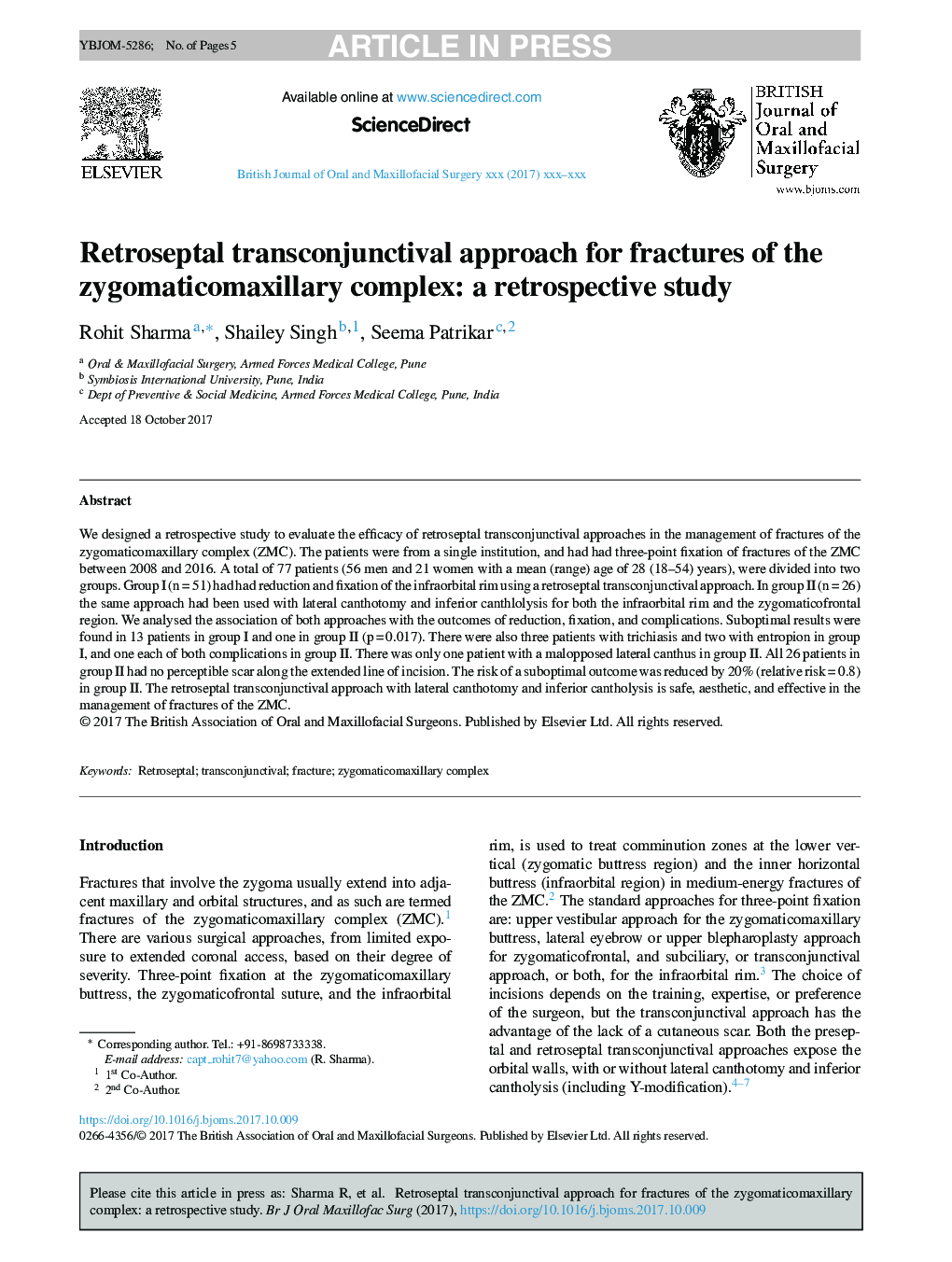| Article ID | Journal | Published Year | Pages | File Type |
|---|---|---|---|---|
| 8696820 | British Journal of Oral and Maxillofacial Surgery | 2018 | 5 Pages |
Abstract
We designed a retrospective study to evaluate the efficacy of retroseptal transconjunctival approaches in the management of fractures of the zygomaticomaxillary complex (ZMC). The patients were from a single institution, and had had three-point fixation of fractures of the ZMC between 2008 and 2016. A total of 77 patients (56 men and 21 women with a mean (range) age of 28 (18-54) years), were divided into two groups. Group I (n = 51) had had reduction and fixation of the infraorbital rim using a retroseptal transconjunctival approach. In group II (n = 26) the same approach had been used with lateral canthotomy and inferior canthlolysis for both the infraorbital rim and the zygomaticofrontal region. We analysed the association of both approaches with the outcomes of reduction, fixation, and complications. Suboptimal results were found in 13 patients in group I and one in group II (p = 0.017). There were also three patients with trichiasis and two with entropion in group I, and one each of both complications in group II. There was only one patient with a malopposed lateral canthus in group II. All 26 patients in group II had no perceptible scar along the extended line of incision. The risk of a suboptimal outcome was reduced by 20% (relative risk = 0.8) in group II. The retroseptal transconjunctival approach with lateral canthotomy and inferior cantholysis is safe, aesthetic, and effective in the management of fractures of the ZMC.
Related Topics
Health Sciences
Medicine and Dentistry
Dentistry, Oral Surgery and Medicine
Authors
Rohit Sharma, Shailey Singh, Seema Patrikar,
